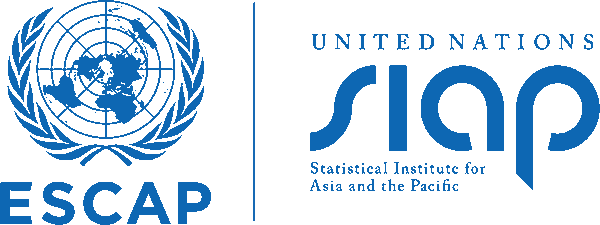
Regional Course on SNA 2008 (Special Topics): Improving Exhaustiveness of GDP Coverage
31 August – 4 September 2015, Daejeon, Republic of Korea
Objectives
(a) Apply SNA 2008 concepts and definitions in the compilation of national accounts statistics and
(b) Expand and increase exhaustiveness in the coverage of GDP estimates in national accounts statistics.
| Course Materials | |
|---|---|
Module One- Key Changes in the SNA 2008 Objectives: (a) to illustrate key differences between the SNA2008 and SNA1993; (b) to highlight implications of adopting SNA2008 on estimates of GDP series. | |
| Session 1.1-How are countries doing? | |
| Session 1.1 Status of global and regional implementation of the 2008 SNA and the major challenges | |
| Session 1.2- SNA 2008 Changes impact on GDP | |
Module Two: Coverage of GDP Objectives: (a) to provide a snapshot of the scope of GDP and its exhaustiveness for specific areas in the light of SNA2008; (b) to discuss methods and approaches to measure the non-observed economy and imputed rents. | |
| Session 2.1- Non-observed economy: What is the non-observed economy?— Some aspects | |
| Session 2.2- Informal activity: Methods and Estimation Techniques | |
| Session 2.3-A Owner Occupied Dwellings- Estimating imputed rent (Conceptual Issues) | |
| class="indent" Session 2.3-B Owner Occupied Dwellings- Estimating imputed rent (Measurement Issues ) | |
| Session 2.4- Financial services associated with insurance and pension schemes(Insurance) | |
| Financial services provided in association with interest charges on loans and deposits | |
| Session 2.4- Overview of charges for financial services | |
| Session 2.4- Financial services associated with insurance and pension schemes (Social insurance schemes) | |
| Session 2.5- Research and development expenditures—Estimation methods | |
| Session 2.6- Military expenditures— Estimation methods | |
Module Three: Use of volume and prices measures in estimation of national accounts Aggregates Objectives: a) to discuss use and application of appropriate price indices in the derivation of constant price aggregates of national accounts; b) to review relevant volume measures for estimating aggregates | |
| Session 3.1-Price and volume measures in national accounts: Introduction | |
| Session 3.2- Price and volume measures in national accounts: Practical methods and problem areas | |
| Session 3.3- Price and volume measures in national accounts: Illustrative example | |
| Session 3.4 a - Price and volume measures : Rebasing and linking; | |
| Session 3.4b - Price and volume measures in national accounts: Rebasing and linking; other topics | |
Module Four: Quality Issues in National Accounts Objective: a) to review quality concepts and selected quality issues in national accounts; b) to discuss the uses of national quality assurance frameworks and data quality assessment frameworks for assuring and assessing quality of national accounts. | |
| Session 4.1a- Quality and Quality Frameworks: Overview of quality dimensions | |
| Session 4.1b- Quality and Quality Frameworks: Use of the IMF DQAF for national accounts quality assessment | |
| Session 4.2a - Data quality in national accounts: Accuracy and timeliness: Quality issues: exploiting VAT data | |
| Session 4.2b - Data quality in national accounts: Accuracy and timeliness: Improving quality in import price indices | |
| Session 4.3- Assessing quality by confronting data from different sources | |
Module Five : Way forward Objective: Develop a set of actions/activities to improve coverage of GDP estimates and quality of national accounts in light of the SNA2008. | |
| Session 5.1- Expert Consultation | |
| Session 5.2- Way forward: Next steps by countries— identifying actions to be taken over the next six months | |
Financial Handbook: Financial Production, Flows and Stocks in the System of National Accounts | |
Country Reports & Country Presentations | Link |
References | Link |
